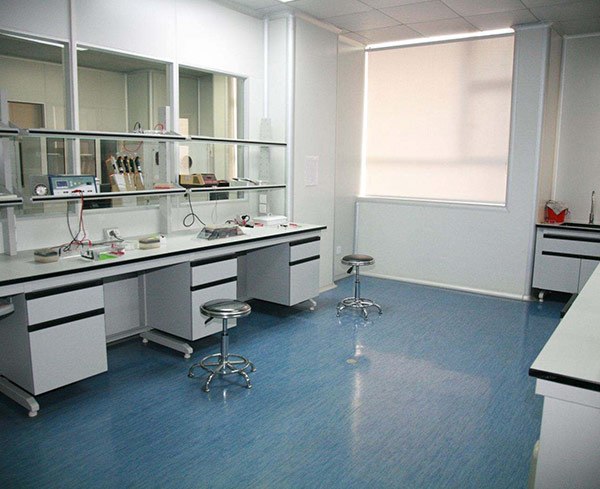24-hour service hotline:0755-29103270
Welcome to Shenzhen Zhongjing Global Purification Technology Co., Ltd.!

backtrackCurrent location:Home / Engineering / Laboratory renovation project
Author: Shenzhen Zhongjing Global Purification Technology Co., Ltd.Time:2018-07-26 14:53:14Views:4210

Gene amplification experiments, also known as PCR experiments, are characterized by a large increase in trace amounts of DNA. PCR is a routine method of molecular biology research and experimentation, and is widely used in various fields of biology, such as: testing for AIDS, hepatitis B, and poultry. Disease detection, diagnosis and diagnosis of oncogenes, DNA fingerprinting, individual identification, paternity identification and forensic evidence, animal and plant quarantine, detection of animals and their derivatives, animal feed, cosmetics, food hygiene testing, genetically modified crops and genetically modified microorganisms.
PCR laboratory layout
The gene amplification laboratory is also called the PCR laboratory. The laboratory is divided into four separate working areas. The first two areas are the pre-amplification area, and the latter two areas are the post-amplification area. The pre-amplification zone and the post-amplification zone should be strictly separated. Experimental materials, reagents, recording paper, pens, cleaning materials, etc. can only flow from the pre-amplification zone to the post-amplification zone, ie from the reagent preparation zone → sample processing zone → amplification zone → amplification product analysis zone, no reverse flow . The flow of the laboratory should also flow from the pre-amplification zone to the post-amplification zone and must not flow in the opposite direction. A buffer room shall be provided in each work area, and interlocking devices shall be installed between the work space and the buffer room. The nucleic acid testing work area with different functions should be separated and independent studios, with obvious signs, and each interval cannot be directly connected. If the zones are closely connected, an item transfer window is required. A UV lamp should be installed at the top of each work area. The UV lamp has a wavelength of 254 nm and a 40W UV lamp is installed for every 20 m2.
The ideal layout mode of the laboratory is to have a dedicated corridor. The reagent preparation area, the sample preparation area, the amplification area and the product analysis area are arranged in a standardized manner. The first three areas each have a buffer room for changing work clothes and Work shoes are used, and an ultraviolet lamp can be mounted on the top. The inner experimental area is set to a positive pressure or a normal pressure state, and the buffer chamber is set to a negative pressure state (an air suction device may be disposed), so that the air flow direction of the three regions is outward from the experimental region, and the buffer chamber is turned into the inner portion. The doors of the laboratory and the corridor can be fitted with a interlocking device. When one door is opened, the other door must be closed to prevent the two doors from opening at the same time. The product analysis area may not have a buffer room, but should be set to a negative pressure state (with an exhaust fan) to allow air to flow from the outside to the inside to prevent the amplification product from flowing out with the air. Each area must be clearly marked, and the work should be carried out in a single flow direction from the reagent preparation area, the sample preparation area, the amplification area to the product analysis area. The equipment of each area including work clothes, shoes, experimental notebooks and pens must be dedicated.
If the above modes are not available, the following basic requirements must be:
1. The four regions must be independent of each other;
2. The equipment and various items in each district must be dedicated;
3. Each district is completely independent, and the buffer room may or may not be available. If it is a zone mode, the zone cannot be directly connected. There should be a buffer room for changing work clothes and shoes, and ensure that the two zones are always in a completely separated state;
4. The exhaust fan or other air suction device should be installed in the product analysis area to maintain negative pressure.
Laboratory air conditioning ventilation system design and pressure control
There should be one-way experimental process flow, logistics, human flow and airflow between the various areas to form a one-way process protection barrier, avoid mutual interference between experiments, and prevent false negative results caused by nucleic acid aerosol pollution to the experimental process. PCR laboratories do not have strict purification requirements, but in order to avoid the possibility of cross-contamination between the various experimental areas, it is advisable to use a full-flow full-flow airflow organization. At the same time, the proportion of sending and exhausting should be strictly controlled to ensure the pressure requirements of each experimental area.
Laboratory decoration
The wall of the laboratory, including the ceiling, should be firm and airtight; all the corners should adopt a circular arc-shaped transition; the wall of the wall should be clean, non-adsorbing, corrosion-resistant, easy to clean and disinfect; the floor material should meet the gap. No leakage, smooth, corrosion-resistant requirements.
